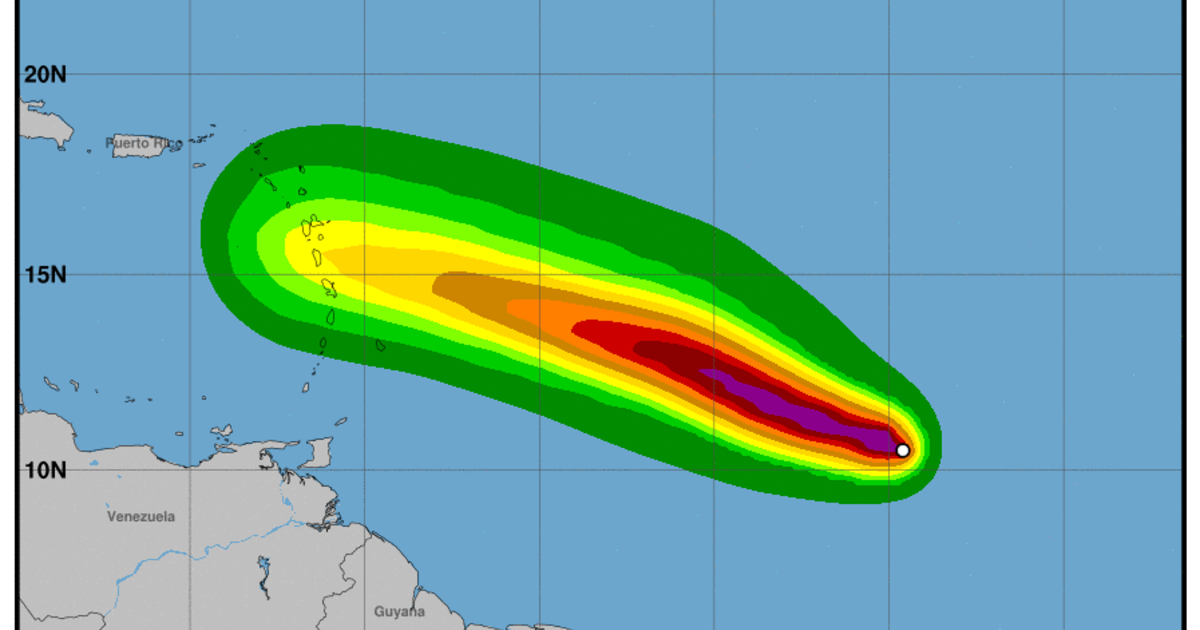Beryl Projected Path
Beryl projected path – Beryl, the latest tropical storm to form in the Atlantic Ocean, is currently moving west-northwestward at 12 mph (19 km/h) with maximum sustained winds of 60 mph (95 km/h). The storm is expected to strengthen into a hurricane by late Tuesday or early Wednesday.
Beryl projected path shows it moving towards the northwest. For more information on the path of hurricane beryl , please visit the link provided. The projected path of Beryl is expected to continue in this direction for the next few days.
Based on the latest forecasts, Beryl is expected to make landfall in Florida’s Big Bend region on Thursday or Friday. The storm is expected to bring heavy rain, strong winds, and coastal flooding to the area.
Beryl’s projected path shows a possible landfall in Florida. For more detailed information on Beryl’s potential path, check out the hurricane beryl spaghetti models. These models provide multiple possible paths for the storm, giving a range of potential outcomes.
Stay informed and monitor Beryl’s projected path closely.
Historical and Current Trends
Historically, tropical storms and hurricanes that make landfall in Florida’s Big Bend region have caused significant damage. In 1995, Hurricane Opal made landfall near Pensacola, Florida, and caused an estimated $3 billion in damage. In 2018, Hurricane Michael made landfall near Mexico Beach, Florida, and caused an estimated $10 billion in damage.
The current track of Beryl is similar to the tracks of Opal and Michael. However, it is important to note that the track of a tropical storm or hurricane can change significantly over time. It is important to monitor the latest forecasts and to be prepared for the possibility of changes in the storm’s track.
Potential Impacts and Mitigation Strategies

Beryl’s projected path poses significant risks to infrastructure, communities, and ecosystems. Identifying potential areas at risk and implementing effective mitigation strategies is crucial to minimize the impact of the storm.
Infrastructure
Beryl’s strong winds and heavy rainfall can damage roads, bridges, power lines, and other infrastructure. Coastal areas are particularly vulnerable to storm surges and flooding, which can cause extensive damage to buildings, businesses, and homes. Mitigation strategies include:
- Evacuating vulnerable areas and securing property.
- Reinforcing infrastructure and implementing flood control measures.
- Developing early warning systems and emergency response plans.
Communities
Beryl can disrupt communities by causing power outages, water shortages, and transportation disruptions. Displacement and evacuation may also be necessary. Mitigation strategies include:
- Preparing emergency kits and evacuation plans.
- Establishing shelters and providing assistance to displaced individuals.
- Coordinating with local authorities and organizations to provide essential services.
Ecosystems
Beryl’s storm surge and flooding can damage coastal ecosystems, including wetlands, mangroves, and coral reefs. These ecosystems provide vital ecosystem services, such as erosion control, water filtration, and habitat for wildlife. Mitigation strategies include:
- Protecting and restoring coastal ecosystems.
- Implementing conservation measures to reduce the impact of storm surge and flooding.
- Monitoring and assessing the impact of the storm on ecosystems.
By implementing these mitigation strategies, communities can reduce the impact of Beryl and enhance their resilience to future storms.
Public Safety and Preparedness Measures

Public safety is paramount during hurricane events. Residents in affected areas must prioritize their safety and take proactive measures to prepare for Beryl’s arrival.
Hurricanes pose significant threats, including high winds, heavy rainfall, storm surge, and flooding. Understanding these hazards and implementing appropriate preparedness measures can significantly reduce the risk of injury, property damage, and loss of life.
Evacuation Plans
Evacuation is a critical safety measure when a hurricane threatens. Residents should familiarize themselves with evacuation routes and identify designated shelters in their area.
- Listen to local news and weather updates for evacuation orders and instructions.
- Have an evacuation plan in place, including a designated meeting point outside the affected area.
- Prepare an emergency kit with essential supplies, such as water, non-perishable food, first-aid supplies, and medications.
- If possible, secure your home by boarding up windows, removing loose outdoor items, and elevating valuables.
- Follow evacuation orders promptly and stay informed about road closures and traffic conditions.
Emergency Shelters
Emergency shelters provide refuge for residents who cannot evacuate their homes or who need assistance during a hurricane.
- Locate designated emergency shelters in your area and make arrangements for transportation if needed.
- Bring essential supplies, including bedding, toiletries, medications, and entertainment for children.
- Follow shelter rules and guidelines for safety and hygiene.
- Stay informed about weather updates and evacuation orders while in the shelter.
Communication Protocols, Beryl projected path
Effective communication is crucial during a hurricane. Establish clear communication protocols to stay connected with family, friends, and emergency responders.
- Identify a primary method of communication, such as cell phone, text messaging, or social media.
- Have a backup communication plan in case primary methods fail.
- Designate a contact person outside the affected area to relay information and coordinate assistance.
- Keep communication devices charged and have extra batteries or charging cables on hand.